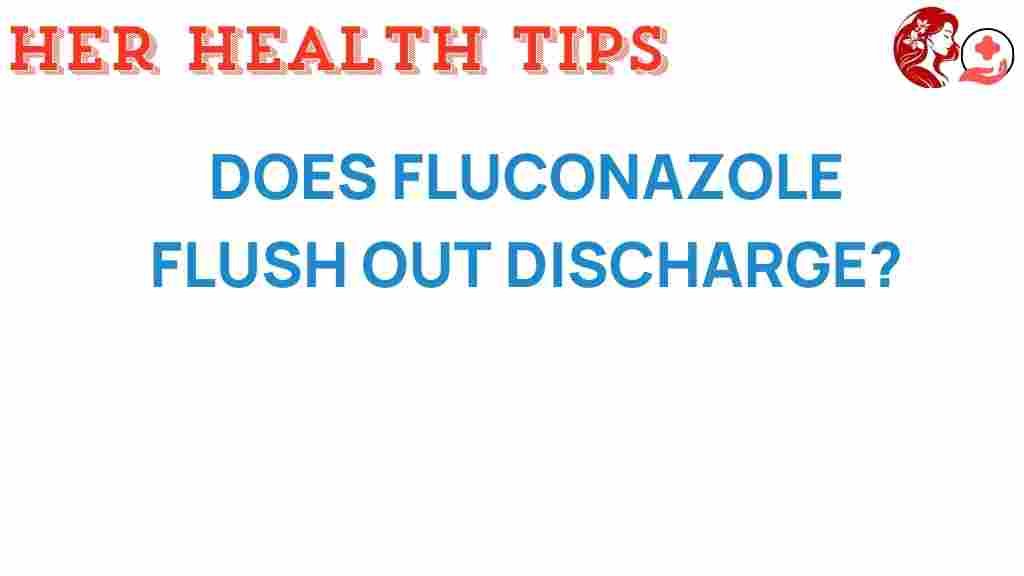Unraveling the Mystery: Does Fluconazole Eliminate Discharge?
When it comes to women’s health, one of the most common concerns is discharge, particularly when it’s associated with a yeast infection. Many women seek effective treatments to alleviate their symptoms, and one medication that often comes up in discussions is fluconazole. This antifungal medication is frequently prescribed to treat yeast infections, but does it truly eliminate discharge? In this article, we will explore the relationship between fluconazole and discharge, focusing on the treatment of yeast infections, symptoms, and overall vaginal health.
Understanding Yeast Infections and Their Symptoms
Yeast infections, primarily caused by the fungus Candida albicans, can lead to a variety of uncomfortable symptoms, including:
- Itching and irritation in the vaginal area
- Thick, white discharge that resembles cottage cheese
- Redness and swelling of the vulva
- Burning sensation during intercourse or urination
These symptoms can significantly impact a woman’s quality of life, leading many to seek medical advice for treatment options. This is where fluconazole comes into play.
What is Fluconazole?
Fluconazole is an antifungal medication commonly prescribed to treat fungal infections, including yeast infections. It works by inhibiting the growth of fungi, effectively reducing the infection and its associated symptoms. Typically, fluconazole is taken orally in the form of a single dose, although in some cases, a longer treatment plan may be necessary.
The Role of Fluconazole in Treating Discharge
When considering whether fluconazole can eliminate discharge, it’s important to understand how yeast infections contribute to the problem. The discharge caused by a yeast infection is typically a result of the overgrowth of yeast in the vagina. By treating the underlying infection with fluconazole, many women find that their discharge decreases or resolves entirely.
Step-by-Step Process of Treatment with Fluconazole
Here’s a basic overview of the treatment process for a yeast infection using fluconazole:
- Consult a Healthcare Provider: If you suspect you have a yeast infection, it’s crucial to consult a healthcare provider for a proper diagnosis.
- Receive a Prescription: Upon diagnosis, your healthcare provider may prescribe fluconazole or recommend over-the-counter antifungal treatments.
- Follow Dosage Instructions: Make sure to adhere to the prescribed dosage. For fluconazole, this often involves taking a single dose, but follow your provider’s specific instructions.
- Monitor Symptoms: After taking fluconazole, monitor your symptoms closely. Many women notice improvement within a few days.
- Follow-Up: If symptoms persist after treatment, it’s important to return to your healthcare provider for further evaluation.
Can Fluconazole Completely Eliminate Discharge?
While fluconazole is highly effective in treating yeast infections, it may not completely eliminate discharge in all cases. Factors that can influence this include:
- Severity of the Infection: More severe infections may require additional treatment.
- Underlying Conditions: Conditions such as bacterial vaginosis or sexually transmitted infections could also cause discharge.
- Individual Response: Each woman’s body reacts differently to medications, and some may need a combination of treatments.
Troubleshooting Tips for Managing Discharge
In addition to fluconazole, there are several strategies women can adopt to manage discharge and promote vaginal health:
1. Maintain Good Hygiene
Practicing good hygiene can help manage discharge and prevent infections:
- Wear breathable cotton underwear.
- Avoid douching, as it can disrupt the natural balance of bacteria.
- Keep the vaginal area clean and dry.
2. Dietary Considerations
Your diet can impact your vaginal health. Consider the following:
- Incorporate probiotics, which can help restore the natural flora.
- Limit sugar intake, as high sugar levels can promote yeast growth.
3. Monitor Antibiotic Use
While antibiotics are essential for treating bacterial infections, they can disrupt the natural balance of bacteria in the vagina, potentially leading to yeast infections. If you’re prescribed antibiotics, discuss with your healthcare provider about preventive measures.
4. Consider Alternative Treatments
Some women find relief from natural remedies, such as:
- Probiotic supplements
- Garlic, which has antifungal properties
- Coconut oil, known for its antifungal effects
However, always consult with a healthcare provider before trying alternative treatments.
5. Seek Medical Advice for Persistent Symptoms
If discharge continues after treatment with fluconazole, don’t hesitate to seek further medical advice. Persistent discharge could be a sign of another infection or condition that requires attention.
Conclusion
In summary, fluconazole is a highly effective antifungal treatment for yeast infections and can help reduce or eliminate discharge associated with these infections. However, it’s essential to consult a healthcare provider for an accurate diagnosis and appropriate treatment plan. Maintaining good vaginal health through hygiene, diet, and awareness of antibiotic use can further support treatment efforts.
Remember, every woman’s body is different. If you have concerns about discharge or any symptoms related to vaginal health, seeking professional medical advice is always the best course of action. For more information about women’s health and treatments for yeast infections, consider visiting this resource.
By understanding the role of fluconazole in treating yeast infections and managing discharge, you can take informed steps toward better vaginal health and overall well-being.
This article is in the category Conditions and created by HerHealthTips Team
